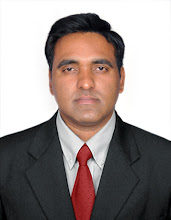Been having a lot of pasta lately! I love food which I dont have to chew.
One reads about the immense technological advances food manufacturing companies have made as far as processing time, product quality and packaging is concerned.I was eating pasta this morning and decided to blog about it,though I generally write blogs that are mainly dedicated to science and engineering. Did some reading here and there and found some quiet amazing facts about the pasta eating population. Of 7 billion people in the world less than a billion have pasta but the consumption is expected to skyrocket especially because of the whole wheat pasta which has known health benefits.
Of course one knows pasta originated from Italy. It is the leading supplier of pasta and, like pizza it promises to gift the world its next food obsession. Over the last ten years world wide production has doubled which simply reinforces the facts mentioned. There are two companies ,FAVA S.p.A and Pavan group , that own 70% of the global market. Like many successful manufacturing companies their success too attributes to their novel application of basic engineering principles, their ability to evolve and to change in order to meet the demands when an industry is in transition.
Pasta making process has evolved over the years. Pasta normally is made from flour and takes a long time to dry and cure. Although both these companies produce the same product their production lines are considerably different from each other,a very healthy competition indeed which can nuture more ideas and encourage continuos improvement. The challenge for both the companies was to reduce the drying cycles and also considering the optimum amount of moisture content(about 12%).Four basic parameters determine pasta quality:Processing temperature, humidity and time, and the residual moisture gradient in the final product.The pre drying and drying sections account for most of the production cost. Pasta was dried at temperatures less than 50C for long periods of time.Now they are dried at much higher temperatures as drying cycles get complex.
Pavan group applies high temperature at the initial phase of the drying process to block enzymatic activity(maintains nutrition!) and also gives it the required color. Higher temperatures with less humidity not only decrease moisture content, it also reduces processing time to under six hours and also prevents swelling. This goes through a series of alternating stages of fast drying and stabilizing. The processed pasta is also annealed to eliminate residual stresses that could crack the final product.
FAVA's is different in the sense that it involves an engineered sequence of operations,which ensures maximum drying and flexibility. They consider the gradual cooling and stabilization to be one of the main criteria which influences its product. Followed by an intense drying phase, it is followed by a quick drying phase and cooling in order to reduce internal stresses.
Of course,both the products are high quality - whether it is spaghetti,macaroni or lasagna... Something about the taste of pasta appeals to me and so looking forward to better tasting pasta from better technologies.
"The belly rules the mind"-Time for dinner!
0 Comments:
Subscribe to:
Post Comments (Atom)
